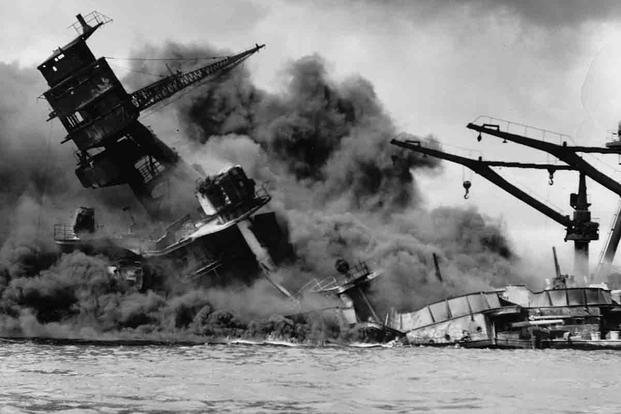When Argentina invaded the Falkland Islands in 1982, it was attacking sovereign British territory. NATO was under no obligation to aid the United Kingdom, due to the language that provided limits to what was protected under the treaty's collective defense provisions. The state of Hawaii technically falls outside of those same provisions.
NATO began as an effort to check the growing power of the post-World War II Soviet Union and prevent an armed attack against the weakened powers of Western Europe. The central part of the alliance is Article 5, which states "an armed attack against one or more of them in Europe or North America shall be considered an attack against them all."
There's one notable exception to the areas protected by the original NATO agreement. It seems to have forgotten about what drew the United States into World War II in the first place: Hawaii.
It's Article 6 that might provide some trouble for Hawaii. When the original 12 member states signed the NATO treaty in Washington on April 4, 1949, political maps looked a little different than they do today. Article 6 specifies that the agreement considered only European and North American territories "in the Mediterranean Sea or the North Atlantic area north of the Tropic of Cancer."
It looks as if the American delegation to the NATO treaty might have forgotten that Hawaii, which didn't become a state until 1959, is just a few degrees south of the Tropic of Cancer. According to the language of the treaty, the Soviet Union could have bombed Pearl Harbor without technically invoking Article 5.

A reporter at United Press International (UPI) first realized the omission in 1965, six years after Hawaii was admitted to the union. The Senate foreign relations committee contended that all American territories outside of the area specified in Article 6 would be protected, despite the treaty's specific language that says the opposite.
"It is difficult, if not impossible, to imagine any attack against the United States, whether directed at Hawaii or another state, which would not be part of a major war," said then-Assistant Secretary of State Douglas MacArthur II. "The consultation and/or collective defensive provisions of the north Atlantic treaty would apply."
The State Department later admitted that only the consultation provision would apply, not necessarily the collective defense requirement.
American officials never tried to change the language of the treaty to officially include the 50th state. Expanding the alliance, officials told UPI, would "turn NATO into an unwieldy worldwide organization since ... overseas possessions of other members would have to be included."
Alaska and its non-continental Pacific islands were granted statehood the same year as Hawaii was, but are protected by NATO because they don't fall into the Tropic of Cancer loophole created by Article 6.
With the rise of China as a geopolitical adversary to the West, calls to revisit the language of the NATO treaty have reemerged. Calling Hawaii NATO's "western flank," some argue that the language of the treaty has been stretched before, given the entry of Turkey into the North Atlantic alliance.
Other NATO-allied possessions that fall outside of the alliance's protection include a number of Caribbean islands, Puerto Rico, French Polynesia, Guantanamo Bay, Guam, the Marianas, Samoa, French Guiana and (still) the Falkland Islands.
-- Blake Stilwell can be reached at blake.stilwell@military.com. He can also be found on Twitter @blakestilwell or on Facebook.
Want to Learn More About Military Life?
Whether you're thinking of joining the military, looking for post-military careers or keeping up with military life and benefits, Military.com has you covered. Subscribe to Military.com to have military news, updates and resources delivered directly to your inbox.
















